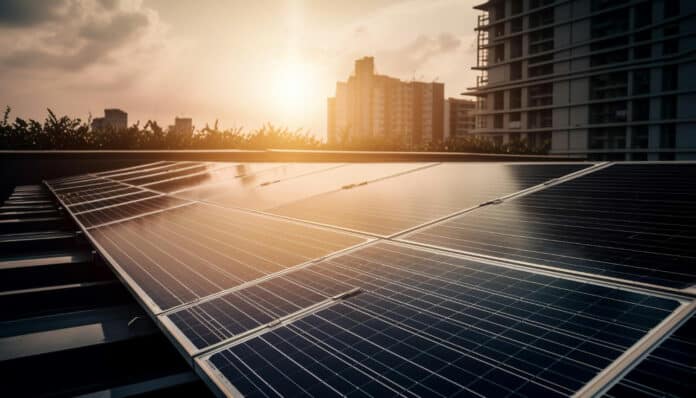Many state governments, including the US, China, India, and Japan, have announced so-called “net zero” emission targets by mid-century to steer the world toward an emission pathway consistent with the long-term temperature goal of the Paris Agreement. Net zero targets have also been put forward by regional and local municipalities, including Paris and Kyoto. By 2050, the City of Paris aims to reduce local emissions by 100%, achieving the goal of zero emissions in Paris.
Decarbonization of urban areas is important because CO2 emissions from cities around the world account for 71%-76% of the global CO2 emissions.
Now, a research group from Tohoku University has explored the possibility of integrating rooftop photovoltaics (PVs) with electric vehicles (EVs) as an effective and scalable solution for supplying clean, affordable, and reliable electricity in urban areas, with a focus on Paris and its surrounding areas.
Researchers proposed the SolarEV City Concept that combines solar panels on rooftops with electric vehicles. This dual-purpose system not only helps reduce carbon emissions from gasoline and diesel vehicles but also stores excess electricity generated by the solar panels to power the home during non-sunlight hours. However, the success and efficiency of this concept varies widely from city to city.
For their study, researchers evaluated Paris, France, for the decarbonization potentials of rooftop “PV + EV” in comparison to the surrounding suburban area of Ile-de-France and the reference city Kyoto, Japan.
In the first study based on Kyoto, researchers found that by using 70% of the rooftop area of Kyoto for PVs and converting all passenger vehicles to EVs, Kyoto’s CO2 emission from electricity generation and gasoline-powered cars by 60-74% and saved 22-37% on energy costs by 2030. Then, the analyses were extended to nine Japanese urban areas. They found that more densely urban areas in Japan, like Kawasaki and Tokyo, with a small rooftop area and the number of vehicles per capita, showed relatively limited CO2 emission reduction by the SolarEV City Concept.
However, similar studies conducted in South Korea, China, and Indonesia have reported significant emissions reductions and energy cost savings in different urban contexts.
Until now, no research has delved into PV + EV systems usage in cities located at high latitudes with hourly supply-demand equilibrium. Solar insolation and electricity demand in such cities exhibit seasonal variations, particularly influenced by winter heating needs. The researchers undertook a study to determine the potential advantages of implementing the SolarEV City Concept in Paris, along with the Ile-de-France region, while also drawing comparisons with Kyoto as the reference city.
“As Paris is a highly urbanized area, we found the city could only supply approximately 30% of its electricity needs through rooftop PVs,” points out Associate Professor Takuro Kobashi, who co-led the research and is based at Tohoku University’s Graduate School of Environmental Studies. “And also, since most PV generation is consumed inside the city, the impact of EVs as storage batteries is limited.”
The surrounding Paris region, which comprises many low-rise buildings covering 71% of the rooftops, could meet 78% of the annual electricity demand in 2019. With the addition of electric vehicles as storage batteries, it was possible to supply approximately 60% of electricity while accounting for the supply-demand of the EVs themselves. This could lead to a 23% reduction in energy costs by 2030.
“Our study not only highlights the carbon reduction potential of implementing a SolarEV City in Paris and the Ile-de-France, but it shows the need to consider regional variations,” adds Kobashi in an official statement. With achieving carbon neutrality by 2050 at the top of the agenda for governments across the globe, SolarEV Cities could go a long way to ensuring this happens.
